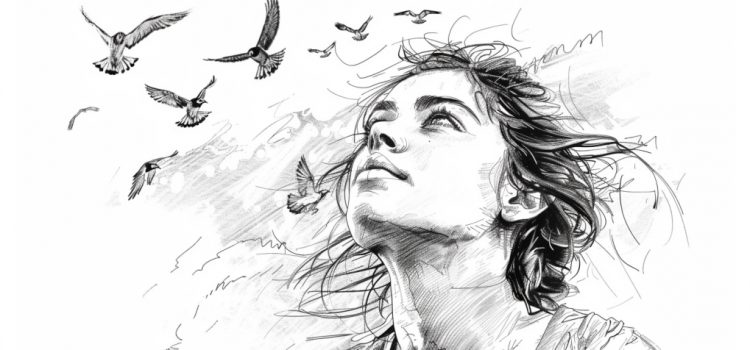
How did Edith Eger survive the Holocaust? How did she create a tolerable existence amid unthinkable horrors?
According to Edith Eger, Auschwitz was a prison only for her body. Incredibly, she found ways to maintain psychological freedom while she faced cruelty, dehumanization, the loss of loved ones, and very little hope.
Read more to discover how this remarkable woman persevered through one of history’s darkest chapters.
Edith Eger at Auschwitz
For Edith Eger, Auschwitz became home when she was only sixteen years old. She recalls that, when she arrived at the camp, a prisoner in a striped uniform forcefully removed her earrings. That evening, she was coerced by Nazi officer Dr. Josef Mengele to dance, serving both as entertainment for him and as a means to secure her survival.
Gates and guards established a divide in Auschwitz, emphasizing the isolation and separation felt between various groups. The prisoners suffered from severe hunger, facing insufficient food supplies and a lack of running water. A fellow prisoner worried about being able to feed her newborn baby as her milk supply diminished.
Eger faced dehumanization and constant threats. She recalls that a girl who tried to flee the camp was killed, and her body was displayed as a deterrent to others. Eger’s parents and fiancé Eric did not survive Auschwitz.
Strategies for Coping and Sustaining Optimism
Eger, despite the constant fear of being chosen for execution, shared moments of intimacy by kissing Eric and envisioning their future together. They contemplated their future, maintaining hope through plans to attend university, move to Palestine, and pursue their intellectual interests. Keeping a sweet item in one’s pocket, as her father suggested, symbolizes holding onto hope amidst times of despair.
Eger managed the traumatic ordeal by concentrating on enduring and anticipating future liberation, constantly reminding herself that surviving today would pave the way for her liberation tomorrow. She managed her situation by focusing on her dance training and using her creativity to escape the fear enveloping her environment. Eger and her companions maintained their resilience by envisioning a safe haven in their thoughts, a sanctuary that was always reachable even in consciousness. They would engage in food fantasies, imagining cooking and feasting on various dishes as a form of mental diversion and nourishment.
Exploring Resilience During Challenging Moments
Eger found solace in her recollections, especially those involving her cherished family members Eric and her mother, which helped her preserve her internal existence and personal identity. Her connection to her sister Magda became a powerful foundation of hope and determination to persevere, as they both lived for each other. A moment of kindness from a Wehrmacht soldier who suggested they ensure they ate offered a slight glimmer of hope.
When Mengele coerced Eger to dance for him, she envisioned herself performing the role of Juliet in Tchaikovsky’s ballet at the Budapest opera house. She discovered she could depend on previously unknown aspects within herself.
(Shortform note: Dr. Josef Mengele was a Nazi officer known for his cruel experiments on prisoners at Auschwitz during the Holocaust.)
Focusing on Elements Within Her Control
Eger realized that while she could not control her external circumstances, she was free in her mind, which Dr. Mengele could never be. The supportive remarks regarding her intellect from her mother gave her a feeling of hope and value. She, along with her fellow prisoners, discovered resilience by engaging in self-dialogue that reinforced their integrity in response to efforts aimed at dehumanizing them.
During a time of extreme vulnerability, Eger concentrated on fortifying her determination by continuously telling herself, “I can do this, I can do this,” thus maintaining a degree of mental autonomy in a situation where she possessed minimal control over external circumstances. Eger highlighted her capacity to impact her environment even amidst chaos by performing gymnastic flips, which not only distracted a guard but also allowed her sister to join her, demonstrating her empowerment in the harsh conditions of the camp.
Eger’s decision to remain with her sister instead of escaping to freedom underscores her dedication to handling her immediate circumstances—staying close to her sister and providing support. She focused on her response to the situation and her capabilities, rather than the overwhelming circumstances outside her influence. Eger developed strategies to survive and achieve freedom while imprisoned at Auschwitz, which she later applied in her career as a clinical psychologist and in her personal experiences. She focused on her ability to choose her reaction to the situations, recognizing her authentic identity when external conditions provided no help or support.






